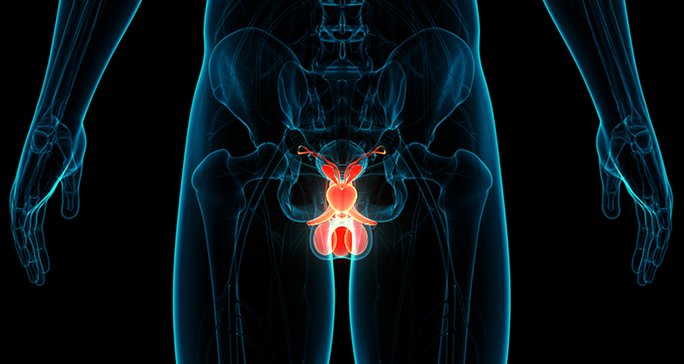- Diseases
- Acoustic Neuroma (14)
- Adrenal Gland Tumor (24)
- Anal Cancer (66)
- Anemia (2)
- Appendix Cancer (16)
- Bile Duct Cancer (26)
- Bladder Cancer (68)
- Brain Metastases (28)
- Brain Tumor (230)
- Breast Cancer (718)
- Breast Implant-Associated Anaplastic Large Cell Lymphoma (2)
- Cancer of Unknown Primary (4)
- Carcinoid Tumor (8)
- Cervical Cancer (154)
- Colon Cancer (164)
- Colorectal Cancer (110)
- Endocrine Tumor (4)
- Esophageal Cancer (42)
- Eye Cancer (36)
- Fallopian Tube Cancer (6)
- Germ Cell Tumor (4)
- Gestational Trophoblastic Disease (2)
- Head and Neck Cancer (6)
- Kidney Cancer (124)
- Leukemia (344)
- Liver Cancer (50)
- Lung Cancer (288)
- Lymphoma (284)
- Mesothelioma (14)
- Metastasis (30)
- Multiple Myeloma (98)
- Myelodysplastic Syndrome (60)
- Myeloproliferative Neoplasm (4)
- Neuroendocrine Tumors (16)
- Oral Cancer (100)
- Ovarian Cancer (170)
- Pancreatic Cancer (164)
- Parathyroid Disease (2)
- Penile Cancer (14)
- Pituitary Tumor (6)
- Prostate Cancer (144)
- Rectal Cancer (58)
- Renal Medullary Carcinoma (6)
- Salivary Gland Cancer (14)
- Sarcoma (236)
- Skin Cancer (296)
- Skull Base Tumors (56)
- Spinal Tumor (12)
- Stomach Cancer (60)
- Testicular Cancer (28)
- Throat Cancer (90)
- Thymoma (6)
- Thyroid Cancer (98)
- Tonsil Cancer (30)
- Uterine Cancer (78)
- Vaginal Cancer (14)
- Vulvar Cancer (18)
- Cancer Topic
- Adolescent and Young Adult Cancer Issues (20)
- Advance Care Planning (10)
- Biostatistics (2)
- Blood Donation (18)
- Bone Health (8)
- COVID-19 (362)
- Cancer Recurrence (120)
- Childhood Cancer Issues (120)
- Clinical Trials (628)
- Complementary Integrative Medicine (24)
- Cytogenetics (2)
- DNA Methylation (4)
- Diagnosis (230)
- Epigenetics (6)
- Fertility (64)
- Follow-up Guidelines (2)
- Health Disparities (14)
- Hereditary Cancer Syndromes (124)
- Immunology (18)
- Li-Fraumeni Syndrome (8)
- Mental Health (118)
- Molecular Diagnostics (8)
- Pain Management (62)
- Palliative Care (8)
- Pathology (10)
- Physical Therapy (18)
- Pregnancy (18)
- Prevention (898)
- Research (392)
- Second Opinion (74)
- Sexuality (16)
- Side Effects (604)
- Sleep Disorders (10)
- Stem Cell Transplantation Cellular Therapy (216)
- Support (404)
- Survivorship (322)
- Symptoms (184)
- Treatment (1776)
Liver regeneration: How the liver’s ability to recover plays into liver cancer surgery
BY Devon Carter
4 minute read | Published November 01, 2023
Medically Reviewed | Last reviewed by an MD Anderson Cancer Center medical professional on November 01, 2023
Did you know that the liver is the only internal organ that can regenerate? But it doesn’t grow back like a salamander’s tail. When a portion of the liver is removed, the remaining tissue grows bigger. This process is called hypertrophy.
We spoke with surgical oncologist Ching-Wei Tzeng, M.D., to learn what’s happening when a liver regenerates and what factors can impact success. He shared insights on the phenomenon, including how his team is pioneering a care approach in the United States that anticipates the liver’s ability to bounce back to yield the best results possible for patients with liver cancer.
Let’s start with the basics. What does the liver do?
The liver plays three main roles: It serves as a protein factory, a blood filter and a metabolic processor.
The liver produces important proteins that work to balance the thickness of your blood. If the liver isn’t functioning properly, such as from not getting the right nutrients or because of damage like cirrhosis or surgery, your blood may become too thin. With thin blood, you’re more likely to bruise and/or bleed from something as simple as brushing your teeth or shaving.
You can also think of the liver as a water filter. It cleans the huge volume of blood that flows from the gastrointestinal tract back to the heart. If the liver is damaged, fluid can get backed up and lead to a bloated belly.
Lastly, the liver supports metabolic processing. It creates bile that aids food digestion and that helps the body absorb medication.
We often associate liver dysfunction with yellow skin, but that’s not always the case. If one or all of these functions aren’t fulfilled, it’s considered liver failure. And it’s not always apparent by a person’s outward appearance.
What’s happening when the liver regenerates?
Anytime the blood flow is reduced to one part of the liver, the liver will compensate and get bigger if the remaining part is healthy. The cells that grow bigger or hypertrophy are immature, so they don’t have the full function of the mature liver cells yet. But over time – in many cases, in just a few days – they mature and work just as well as the cells that were removed.
Many patients who receive liver cancer surgery see that their remaining liver tissue grows to be almost as big as what was removed only a month after surgery. We see this in patients who have even up to 50% of their liver removed.
We use a test that measures bilirubin levels to help track the function of the liver. When the liver isn’t working properly, bile builds up, and the bilirubin level increases. Once we see that number peak and then start to drop, we know the liver is fine.
We find that for most patients, the liver performs just as well after surgery. It’s as if we didn’t do the surgery. It’s pretty amazing how the liver can bounce back in such a short time.
How does liver regeneration play into the development of a cancer treatment plan?
When planning treatment, we count on the liver to regrow after surgery. With surgery to the lungs, kidney, pancreas, stomach or intestines, we think very carefully about how much tissue we remove because these organs can’t regenerate. There’s no going back.
With liver surgery, we are still very careful, but we plan for some growth to make up for what we remove. We formulate a plan specific to each patient to remove the necessary portions of the liver while leaving a minimum total 30% to grow back. We calculate that using a computer software that measures the size of the liver in relation to a patient’s body size.
We are also careful to remove only what is necessary. That's important for patients’ quality of life. Also, if the liver cancer comes back, we want to ensure a patient has plenty of liver to take more chemotherapy, if necessary, or even have surgery again. We're not just getting rid of cancer today. We're trying to set up patients to be strong should they ever face a diagnosis again.
What research is being done surrounding liver regeneration and cancer?
For the past two decades, MD Anderson has been the leading group in the United States to study preoperative portal vein embolization (commonly referred to as PVE) to grow the liver before surgery. The approach was originally developed in Japan.
About a month before surgery, we deliver small particles to the portion of the liver that we plan to remove to block the blood flow. It helps to redirect the blood to the healthy portion of the liver, which can help it grow ahead of surgery. By growing the healthy portion of the liver, we can hit the 30% mark. It’s amazing because we’re able to offer life-saving liver surgery to patients who previously weren’t eligible.
Request an appointment at MD Anderson online or by calling 1-877-578-9330.

It’s pretty amazing how the liver can bounce back in such a short time.
Ching-Wei Tzeng, M.D.
Physician & Researcher





